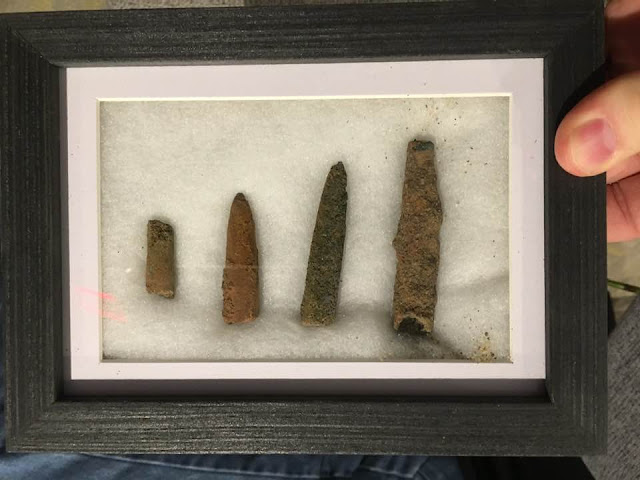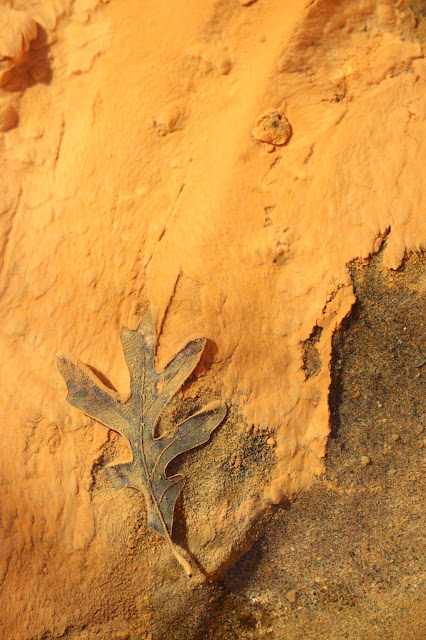The Progression of a Pseudomorph: Vivianite after Belemnites.
While pretty useless as fossil specimens, vivianite pseudomorphs are really interesting mineral phenomena. A pseudomorh is a mineral that replaces another mineral. There are several ways this can happen. With vivianite, it is a rather complex series of processes.
From left to right in this display box you can see a series of belemnites from a cretaceous deposit in Mullica Hill, NJ. The first one probably changed from relatively unstable aragonite to more stable calcite by a simple shift in the molecules (called a paramorph). This one has just barely begun to get coated by iron from the surrounding matrix. The transition progresses to a complete coating of rusty orange iron oxide- in this case, probably siderite, a combination of iron and carbonate from the shell material. Later, the rusty iron in an anaerobic (airless) environment changes from Ferrous iron oxide to Ferric iron oxide. The ferric iron oxide then combines with phosphates and lots of water in an otherwise anaerobic environment to form a transparent vivianite coating. The addition of oxygen to the mix changes to color from colorless to green to blue to black. There is some question as to whether or not light will accelerate this process. Some pseudomorphs continue to fuse with iron in the hard-water creek, adding another coat of rusty iron minerals. In the example to the far right, the original calcium carbonate shell is now completely gone, leaving a hollow tube.
 |
| Progression from fossil to vivianite pseudomorph |
 |
| A vivianite pseudomorph after a belemnite, with some of the fossil remaining inside |


Comments
Post a Comment